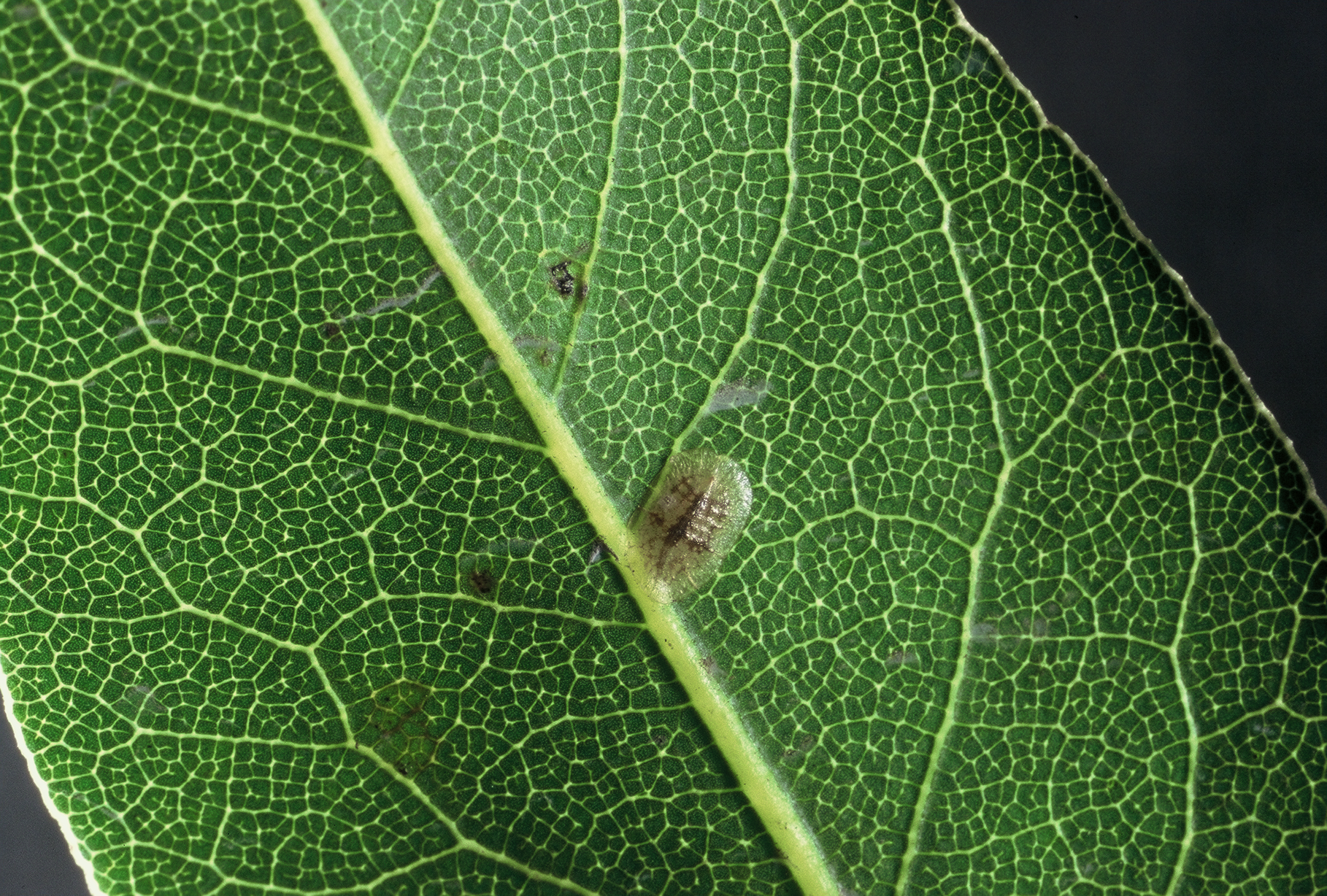Zomerweg 20
B 8490 Jabbeke
T +32(0)50 81 17 43
F +32(0)50 81 40 03
E info@lauretum.be

INFESTATIONS (DISEASE)
If you give the bay tree what they deserve - a sufficiently large pot, water, and fertiliser - you will have a ‘healthy‘ plant. If in addition, it can pass the winter in sufficient cold, you will seldom have any problems in the form of diseases or pests. However, these cannot of course be ruled out altogether.
The scale insect or cottony maple scale is one of the main enemies. These nestle on the underside of leaves, very close to the midrib. They can be recognised by helmet-like shells with which they attach themselves and under which, they also seek shelter with their eggs. Only the young larvae can move. Scale insects feed on plant sap and thereby secrete a sugary substance that make the plants sticky. The black mould that settles on it is called sooty mould.
Plants that are infected by scale insects and sooty mould can be washed with soapy water made with natural soap. However, this will not remove all the insects. In order to remove all the insects, a treatment with an insecticide against scale insects is required.
The bay flea louse/bay sucker (trioza alacris) can infect your bay trees. They can be recognised by small white spots on the leaves. The affected young leaves curl downwards. The sucked out leaves first turn pale green, and then turn brown.
On detecting infestation by bay flea louse, it is best to remove the curling leaves. If the damage continues, the only option is drastic intervention with an insecticide against the bay flea louse.